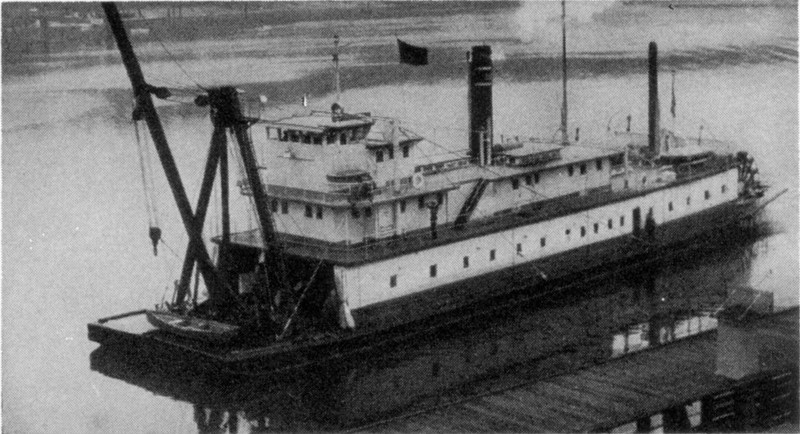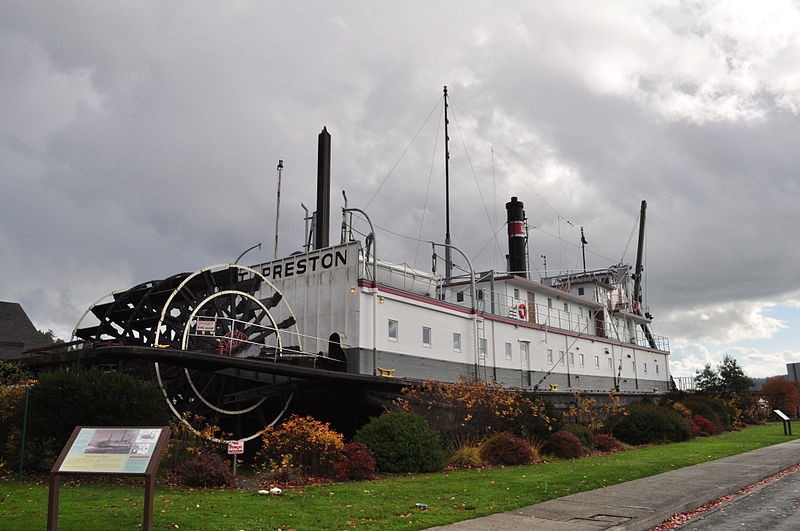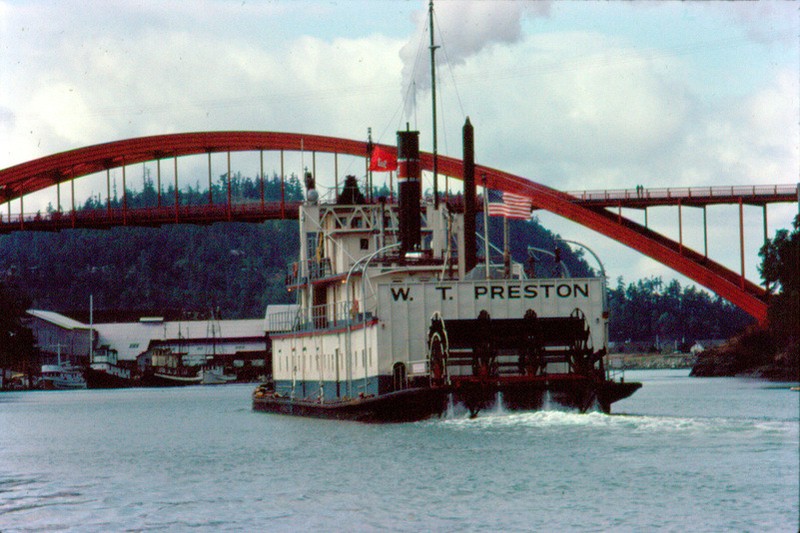W.T. Preston Museum
Introduction
Text-to-speech Audio
Images
The Preston in operation

The Preston today

The Preston in the 1980s

Backstory and Context
Text-to-speech Audio
Since the settling of the Pacific Northwest, riverine traffic served as one of the most vital parts of life. However, the ever-growing traffic proved a double-edged sword, causing obstructions to navigation. From log jams to shifting sand bars and buoys, the rivers were a dangerous place to operate. Because of this Congress authorized the creation of a snagboat to be built, which would help remove these obstructions. This was the Skagit, which was wooden hulled and began operating in 1884. This was then followed by the Swinomish, also wooden hulled and built in 1914. In 1929 the first iteration of the W.T. Preston was constructed, with a wooden hull and many parts taken from the first two vessels. Ten years later the Preston was retrofitted with a steel hull, which proved to be much sturdier than the earlier wooden one.(W.T. Preston Sternwheel Steamboat.)
The Preston served under the Army Corps of Engineers which used her to remove any obstacle to navigation which they came across. This was done with the use of an assortment of “snagging gear”, which included a large wooden crane and winch, and two spuds which served as anchors. The crane itself is operated off of two donkey engines, essentially a small steam engines, which were taken off of the Swinomish. One engine operated the lift and the other operated the large turntable. This set up allowed for the use of a 70 foot boom, 30 ton snagging capacity and 15 ton bucket lift capacity for dredging. In order to operate the crane the ship would secure its position using two spuds, essentially large metal rods, which allowed the ship to remain in one position in up to twenty feet of water. While this may seem shallow, the ship would routinely operate in shallow areas and near the shore, as that’s where most sandbars and underwater obstacles occur. This set up, combined with the shallow draft of only three feet (Info) allowed the Preston to operate in almost any area it was needed. And if it were too shallow for her, her crane allowed the ship to extend its reach even further.
She served faithfully, and with little change to her appearance or design, save the transition from a crude oil burner to diesel in 1967. However, by the mid-1960s her role began to change. Thanks to the increase in road and rail traffic during the 20th century, the tributaries and inlets of the Puget Sound area became less economically important. But during this same time recreational boating on the wider parts of the sound was becoming more popular. As a result, the Preston was called on to operate in wider, deeper waters than she was originally designed for. Despite this though, there was only limited instances of her being in any true danger.(W.T. Preston Sternwheel Steamboat)
As her importance to the daily economic activity dwindled, her importance as a cultural icon increased. By 1979 she was placed on the National Register for Historic Places, and was retired from active service in 1981. She was now government surplus, but both the Army Corps of Engineers, and the Government Service Agency knew they wanted to preserve her somehow. The city of Anacortes offered a proposal to turn her into a museum ship, which was eventually chosen by the Corps. She was towed to the city and placed on land in 1983. In 1989 she was designated a National Historic Landmark and is continuing to proudly serve as a museum.(Ibid.)
Sources
"W.T. Preston Sternwheel Steamboat." Anacortes Maritime Heritage Center and W.T. Preston Sternwheel Steamboat. Accessed March 11, 2016. http://www.cityofanacortes.org/maritime_heritage_center_and_wt_preston_sternwheel_steamboat.php#.VuNvy_krLcs.
"Info." W.T. Preston Sternwheel Steamboat Info. Accessed March 11, 2016. http://www.cityofanacortes.org/w_t_preston_admission_and_specifications.php#.VuNvLPkrLcs
